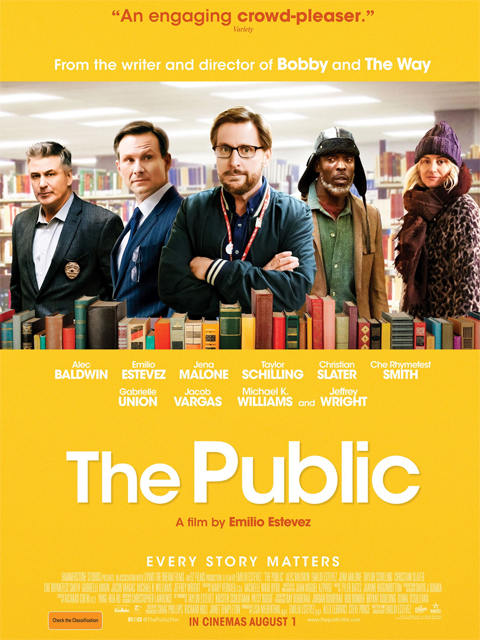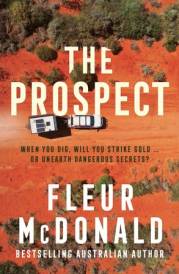Emilio Estevez The Public

Cast: Alec Baldwin, Emilio Estevez, Jena Malone, Taylor Schilling, Christian Slater, Gabrielle Union, Jacob Vargas, Michael K. Williams, Jeffrey Wright, Che "Rhymefest" Smith
Director: Emilio Estevez
Rated: PG-13
Running Time: 122 minutes
Synopsis: In "The Public" an unusually bitter Arctic blast has made its way to downtown Cincinnati and the front doors of the public library where the action of the film takes place. At odds with library officials over how to handle the extreme weather event, some homeless patrons turn the building into a shelter for the night by staging an "Occupy" sit in. What begins as an act of civil disobedience becomes a stand-off with police and a rush-to-judgment media constantly speculating about what's really happening. This David versus Goliath story tackles some of our nation's most challenging issues, homelessness and mental illness and sets the drama inside one of the last bastions of democracy-in-action: your public library.
The Public
Release Date: August 1st, 2019
About The Production
Looking for fact-based data and information without spin, media manipulation or bias? Pay a visit to the public library.
The "intersectionality" of the seemingly insurmountable issues of our time; climate change, homelessness, mental illness, drug addiction, racism, income inequality, the dismantling of our civil and constitutional rights, class division - all collide and connect inside the walls of the public library.
From small towns to urban cities around the world, the public library serves as an invaluable community social hub. The library is a place of refuge, of learning, of connecting to the arts, of imagination and curiosity, a gathering place for real social networking and cultural engagement. A place for moms to connect at "children's story time," a place to look for a job, apply for college, get your passport. A place that many regard as one of the last true bastions of democracy in action.
So, when was the last time you visited your local public library?
Ask almost any librarian working at reference desks in public libraries in towns and cities across the country, and they will tell you that their daily role, as de-facto social worker, was not what they were taught in library school.
Emilio Estevez is no stranger to the library world. Thirty-three years after portraying one of five teens sentenced to Saturday detention in a school library in the 1985 teen classic The Breakfast Club, Estevez steps behind the camera to write, direct, and star in "The Public," about a group of homeless people who seek refuge in Cincinnati's downtown public library during a bitterly cold Midwestern winter evening.
The journey of "The Public" began over 11 years ago. It was originally inspired by a moving 2007 essay called "Written Off" by Chip Ward, a now-retired assistant director of the Salt Lake City Public Library System, published in part in the Los Angeles Times (and in full at tomdispatch.com under the title, "What They Didn't Teach Us in Library School: The Public Library as an Asylum for the Homeless").
For Estevez, Ward's essay was heartbreaking and staggering. He recognized the world Mr. Ward described from his experiences at SLCPL. Estevez compiled the bulk of his research for his film Bobby at Los Angeles Public Library's Central Library downtown and Estevez saw the similarities in the essay to his experience there.
Earlier this year, Estevez spoke with the American Libraries Association magazine about his experiences on the film and working on a commercial endeavor inside a space that is "free for all."
Question: What obligations do libraries and other public spaces have to help the homeless and other populations in need?
Emilio Estevez: The word obligation makes some people uncomfortable. There are many in this country who look at the homeless and consider their situation "regrettable but inevitable since some people are bound to fail," as Ward writes in his piece. And that it's the fault or shortcoming of that individual; that he or she did not possess the desire to "pull themselves up by their bootstraps."
Well, first off, you've got to have boots to begin with. I understand this is a figure of speech, but let's talk about shoes. You and I have shoes. Multiple pairs. As do probably most of the people we associate with. We also have computers, some of us more than one. A laptop, iPad, and mobile phone, maybe? Now imagine that you don't have any of those communication devices. You depend on the local library to access a computer where you can sign on, usually with a time limit of two hours depending on the waiting list. You have two hours to write emails to your friends, let your relatives know you're still alive and surviving the latest cold snap, look for job openings, maybe catch up on your Facebook feed, and read the news of the day. Two hours.
So, in the context of this question I would substitute the word obligation with moral imperative. It is a moral imperative for libraries and other public spaces to help the homeless and other populations in need. If you possess a beating heart that is as close to an inarguable statement as you are likely to hear. Unfortunately, there are many along political divides who are seemingly heartless. They view public commons like libraries and issues like net neutrality with contempt. Explain the end of net neutrality to the homeless person sitting in front of that library computer who watches his two-hour time limit get eaten up by slow internet service because the underfunded institution could not afford the premium service and extend it to patrons.
Question: Why did you choose Cincinnati as the location for The Public?
Emilio Estevez: Originally, the film was set in Los Angeles for two reasons. First, the Los Angeles Public Library's Central Library, specifically its older section, is an architectural gem"the detail in its original 1926 construction is very cinematic. Second, I thought that it would be wildly ironic that Los Angeles would be swept up in a cold snap, given how we are known for our enviably consistent sunny and 72° weather; even the weather could no longer be trusted and safe.
However, in recent years I have been spending time in Cincinnati, where my mother was born, and near Dayton, where my father grew up. During my visits, the director of the Greater Cincinnati and Northern Kentucky Film Commission encouraged me to bring film production to the city, citing a generous state tax incentive that could help offset our production budget. I followed up and toured the large downtown location of the Public Library of Cincinnati and Hamilton County (PLCHC), and I saw immediately how my film could be relocated to Ohio quite easily with a few minor tweaks. And no temperature drop in Los Angeles can possibly compare with winter cold snaps in the Midwest, which are often lead stories on national news. So Cincinnati became the perfect city to set the story for The Public.
Question: What was it like filming in a working library?
Emilio Estevez: As we began to prep the film and meet with Kim Fender, former director of PLCHC, library administrators, and personnel, it became apparent to them that the library building itself was going to be a main character in the film. Quite rightly, they worried that giving us access could negatively impact the mission of the public library. I made it very clear that my intention was not to impinge the public right to freely access the library, its information, and its resources. It was important to convey how seriously I take the work of librarians and how important I believe libraries are as a crucial and essential public commons. Fortunately, in the film, there are few daylight scenes, as the bulk of our story takes place at night after the library has closed. As the director, writer, and producer of a crew of more than 100 people, my challenge was properly wrapping after a night of shooting and making sure that we left no discernible footprint.
However, many of the colorful banners that you see in shots throughout the film were manufactured by production designer David Bomba and our wonderful art department at my insistence. I wanted to decorate the public space with images and quotes by Sojourner Truth, Henry David Thoreau, Reinhold Niebuhr, and Frederick Douglass that would serve as subtle and not-so-subtle Easter eggs connecting many of the sensibilities of the story.
I thought the quote from Douglass, "It's easier to build strong children than to repair broken men," was especially relevant. And "The Mask of Anarchy" by Percy Bysshe Shelley: "Rise like lions after slumber in unvanquishable number…."
Yeah, maybe not so subtle, but what the hell, right? We are not living in "subtle times."
And Niebuhr is credited with creating the "serenity prayer," which I thought was important to include given the level of alcoholism and drug addiction that plagues many of the country's homeless library patrons.
Those banners are still hanging in the Cincinnati library space.
Question: How did you prepare for the film with regard to learning the intricacies of the library world?
Emilio Estevez: Quite simply, I would visit libraries and quietly sit and observe behavior. There is perhaps no better place on the planet to observe human behavior than inside a public library. Of course, as I made my intentions known that I would be making a film set inside a library, I was met with both suspicion and encouragement by library staff and administrators. Ultimately, I was given access to the inner workings and a librarian's day-to-day routine. I learned quickly that what most librarians went to school to study and earn a degree in has very little practical application on the floor. A modern-day librarian is now a de facto social worker and first responder. It's not unusual for librarians to be trained in the use of Narcan, a nasal application used to treat opiate overdoses.
Question: What response has the film received from the library world thus far?
Emilio Estevez: Reaction from librarians who have seen the film has been overwhelmingly positive.
This past June, we screened the film at the American Library Association conference in New Orleans. Over three thousand librarians and library administrators attended the multiple screenings. They felt heard, seen and understood and in the end, grateful we got most of it right, avoided stereotypes and put a spotlight on the vocation of a librarian.
People who do not frequent their local library really do believe that librarians have a job where they get to "sit around and read all day." The film dispels that myth within the first 10 minutes.
The Public
MORE



